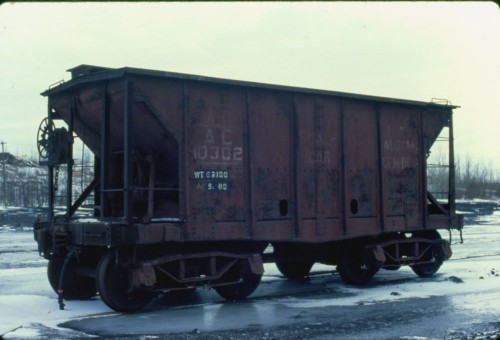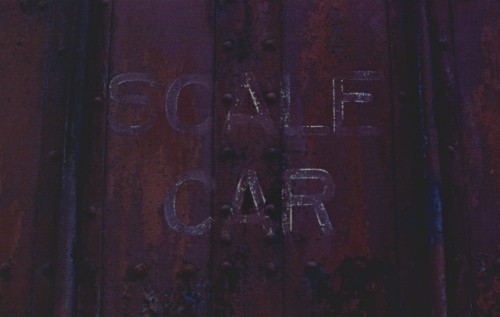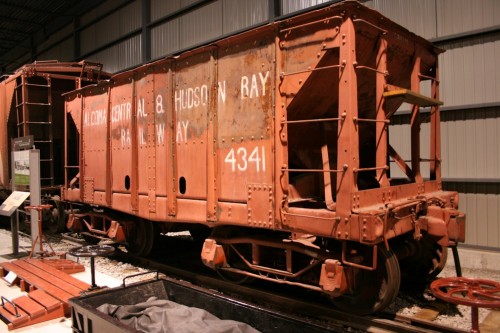In the previous post, I discussed background information on the Algoma Central’s old steel ore hoppers from the early 1900s, and the surviving example that was converted to a scale test car and operated into the mid 1980s.
Fortunately Westerfield makes a detailed craftsman kit for a couple of variations of the Pressed Steel Co. ore hopper, making it possible (although a bit of work) to model either the early 1900s ore fleet or the surviving scale test car.
The instructions provided with the kit are quite detailed, so I won’t go into a detailed blow-by-blow of the construction, except to point out the major deviations and additions I made based on the modernizations performed on the prototype car.
The most obvious modification when modeling the scale car conversion is of course the steel roof that was added to the car. This was simply fashioned from some .020″ sheet with some interior bracing and a 1×4 ridge pole to set the appropriate peak height and slope. This was glued to the tops of the sides with ACC. Fascia trimwork on the ends was added with 1×4 strip cemented to the roof.
Tichy running boards support and brass wire corner grabs added. I plan to try to add the actual wood running boards using weathered strip wood later once the car is painted.
Another modernization feature on the prototype car is upgraded grab iron arrangements with full ladder grabs at the opposite corners of the car. This required drilling a number of new holes for the additional grab irons and bending them from brass wire.
Also, the original hand brake was upgraded with a power hand brake with the familiar vertically mounted brake wheel with geared housing, although the car retained the original split “K” air brakes. This was added by building up the mounting bracket for the brake wheel housing with styrene strip and adding a brake wheel & housing from a Tichy brake detail sprue.
One last note I should make on the brake equipment is that the kit box contained a Tichy parts sprue for a standard “one-piece” K brake, when the car should have a split K brake with separate piston and air reservoir. This may have just been a packaging mistake on my car, but I had to obtain another Tichy part sprue for the split version of the K brake system. The extra Tichy parts may eventually find their way under other old work equipment at some point.
The car still needs to be painted, and custom decals made to finish it off.





